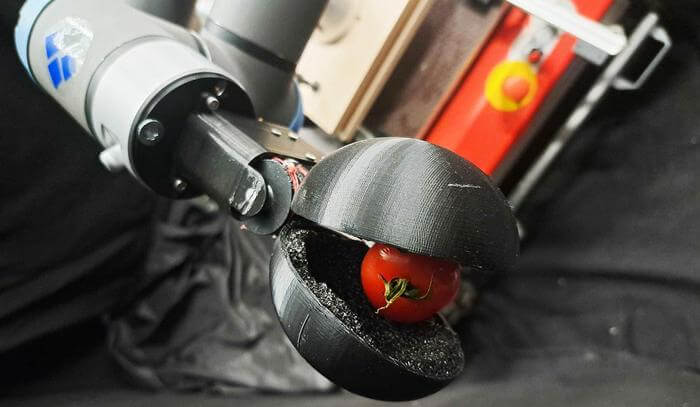In the realm of artificial intelligence (AI), large language models (LLMs) have emerged as game-changers, revolutionizing the way we write, learn, and create art.
These neural networks, with their unparalleled ability to process vast amounts of textual data, have captured the imagination of researchers and innovators worldwide. Now, a group of scientists from École Polytechnique Fédérale de Lausanne (EPFL) has taken this technology to new heights by applying it to the field of robotic design.
In a groundbreaking case study recently published in Nature Machine Intelligence, Josie Hughes, the esteemed head of EPFL’s Computational Robot Design & Fabrication Lab, alongside Francesco Stella, a brilliant PhD student, and Cosimo Della Santina from TU Delft, leveraged the power of Chat-GPT, an LLM, to conceive and design a fully functional robotic tomato-harvester. Their study establishes a remarkable framework for collaborative design between humans and language models, shedding light on the immense possibilities and potential risks associated with integrating artificial intelligence tools into the realm of robotics.
Despite being a language model primarily focused on text generation, Chat-GPT proved to be an invaluable asset, providing unparalleled insights and sparking human creativity in physical design. “Even though Chat-GPT is a language model and its code generation is text-based, it provided significant insights and intuition for physical design, and showed great potential as a sounding board to stimulate human creativity,” Hughes explains.
The study unfolded in two crucial phases: ideation and realization. During the ideation phase, the researchers engaged in insightful discussions with Chat-GPT to establish the purpose, design parameters, and specifications of the robot. Drawing from the language model’s access to a vast trove of global data, encompassing academic publications, technical manuals, books, and media, they navigated future challenges faced by humanity and identified robotic crop harvesting as a viable solution to the pressing issue of global food supply. As the dialogue progressed, they employed Chat-GPT’s capabilities to refine the questions and sought advice on specific design aspects, such as the shape of the gripper and the materials and code necessary for optimal control of the device.
Stella underscores the significance of this collaborative exploration, stating, “While computation has been largely used to assist engineers with technical implementation, for the first time, an AI system can ideate new systems, thus automating high-level cognitive tasks. This could involve a shift of human roles to more technical ones.”
The researchers, cognizant of the various modes of collaboration between humans and LLMs, highlighted additional approaches in their paper. One such mode, called “collaborative exploration,” harnesses AI to augment researchers’ expertise by contributing vast knowledge from diverse fields. Additionally, AI can serve as a “funnel,” refining the design process and providing technical input while humans retain creative control.
Nevertheless, the researchers caution that each collaboration mode carries inherent logical and ethical risks, demanding careful evaluation. Deploying LLMs raises concerns of bias, plagiarism, and intellectual property, particularly in determining whether an LLM-generated design can be considered truly novel.
Hughes raises a crucial point, stating, “In our study, Chat-GPT identified tomatoes as the crop ‘most worth’ pursuing for a robotic harvester. However, this may be biased towards crops that are more covered in literature, as opposed to those where there is truly a real need. When decisions are made outside the scope of knowledge of the engineer, this can lead to significant ethical, engineering, or factual errors.”
Despite these valid concerns, Hughes and her team, drawing from their experience, remain optimistic about the immense potential of LLMs if managed prudently. They emphasize the importance of the robotics community leveraging
these powerful tools to advance the field ethically, sustainably, and in a manner that empowers society at large.
The fusion of human ingenuity and the raw computational prowess of language models opens up boundless possibilities for innovation in robotic design. As we venture further into this uncharted territory, it is crucial to tread carefully, ensuring that the potential risks are mitigated and the benefits harnessed to drive progress that is both responsible and inclusive.


